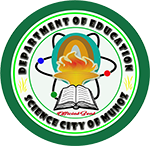Al John U. Febrero
Teacher III
The 21st century teachers should possess competencies that will cater 21st learners’ needs and demands to be able to provide meaningful teaching and learning process. In the set requirements for RPMS-PPST in the conduct of classroom observations it has its components that require lesson integration to information and communication technology (ICT). So, teachers’ belief should be aligned and integrated to educational progress and development in terms of ICT utilization.
If learners will be asked in terms of their habits and interest most of their answers are related to the use of the computer and internet. Further, implementing the K to 12 educational programs brings challenges for the teachers and learners in terms of the availability of references and resources and they will rely and defend on the use of internet: the google. Mozilla Firefox, world, wide, web and the like.
It is expected that teachers possess positive beliefs towards teaching and learning process and the learners as well, as they are their main clienteles. Treating the profession not only a job but an opportunity to be the catalysts of change and development through providing learning that will produce globally competitive learners ready to surpass challenges of lives and having a great tendency to live successfully and comfortably. These beliefs must be integrated with evolving and developing technology. Employing teachers positive outlook and perception to the utilization of modern technologies will enables them to cope with the diversities of the learners and their learning preferences. Integrating these two components will be the key factors in opening new opportunities to extend the teaching and learning process beyond the use of books and other printed learning references and materials. Today, all are living a past facing world having the tendency of inconsistencies and challenges that will hinder their time and resources, but with the integration of technology it allows them to make things faster and easier which is meaningful to teaching and learning process, to make it practical and in such way that learners focus, enjoy and learn. Through these, teachers will strengthen their positive beliefs in relation to education as it will provide them the means of making their roles and responsibilities to be delivered in the easiest, fastest but meaningful way. Having the major consideration that teacher together with learners will utilize these by being responsible and analytical users.
Teachers classical beliefs shall turn into flexible and adjustable ones defending on the demands from the learners. Changes and development are evolving, everyone should be ready to accept it not for personal good and benefits but rather searching and bring the best for the learners. Teachers should step out from their comfort zones. Because it will provide new experiences and opportunities for learning, and it will contribute to their personal and professional well-being. Likewise, the knowledge and skills that one must possess and acquire do not gain them from one shot, learning new technological tools will be started from discovering; going to learning and leading to mastery. Further, technology in education is intended to deliver and clarify the contents and reinforce the skills. Day-by-day delivery of traditional way of teaching may lessen the learner’s excitement and energy to be participated in different learning activities. Starting up to what are the interests of the learners make them feel the connection to the lesson and we can do it through the technology integration like video clips, audio- visual materials, pronunciation drills and the like. These materials will promote active participation form the learners; thus, it will maintain their focus and attention.
Integrating teachers positive beliefs toward teaching and modernization will bring positive effects on different sides: First, it will uplift educators’ confidence as they will be able to provide the demands of educational development; it will provide learners’ needs in terms of references and sources of reliable information; and the teaching and learning process will become dynamic and integrative.
